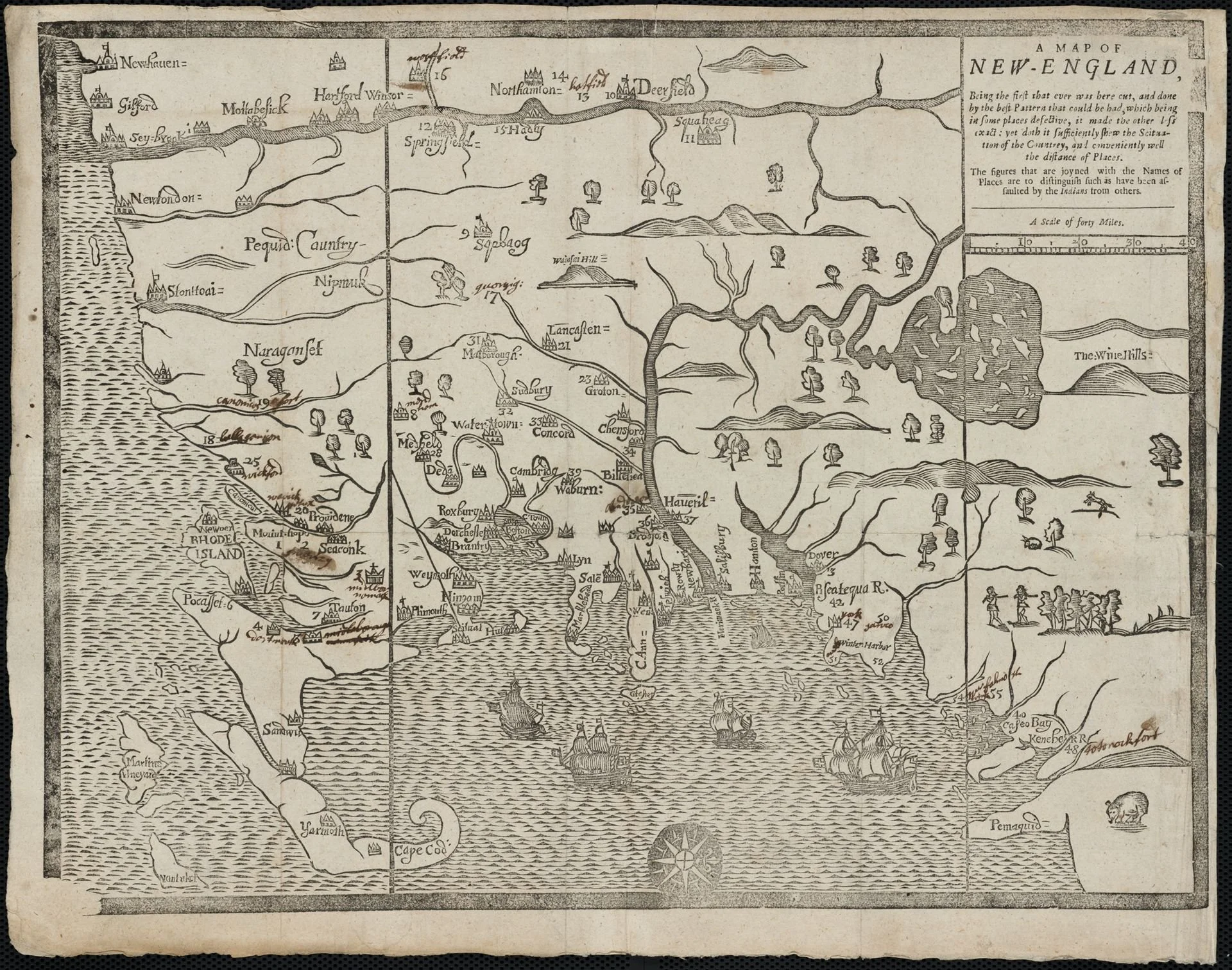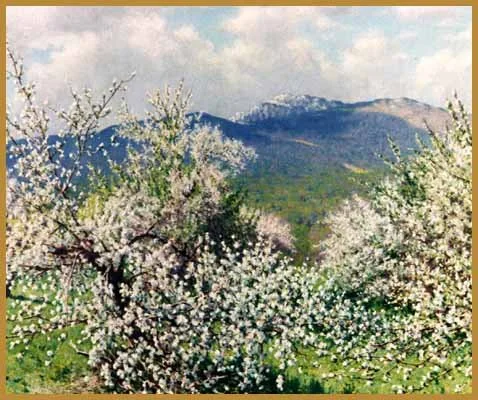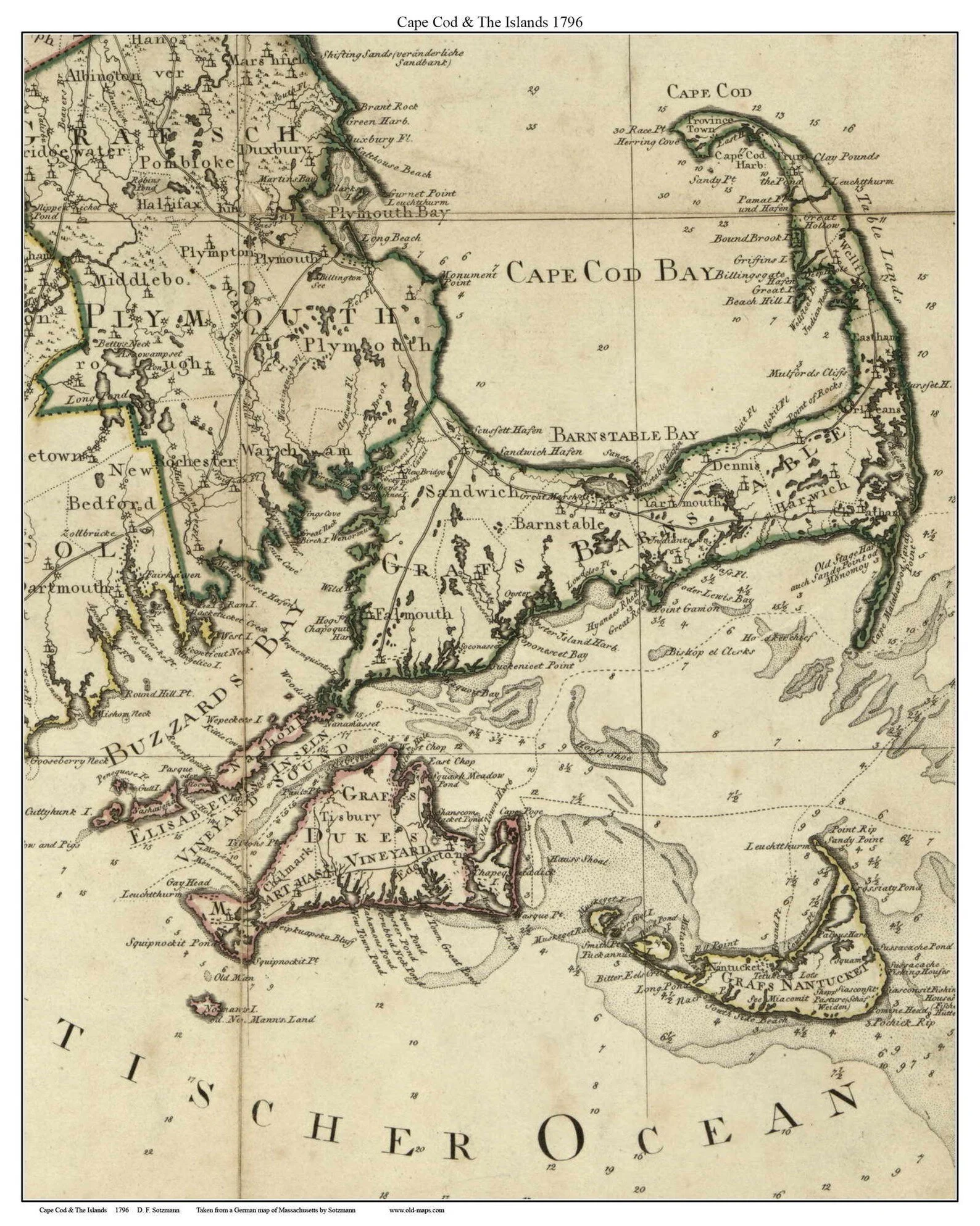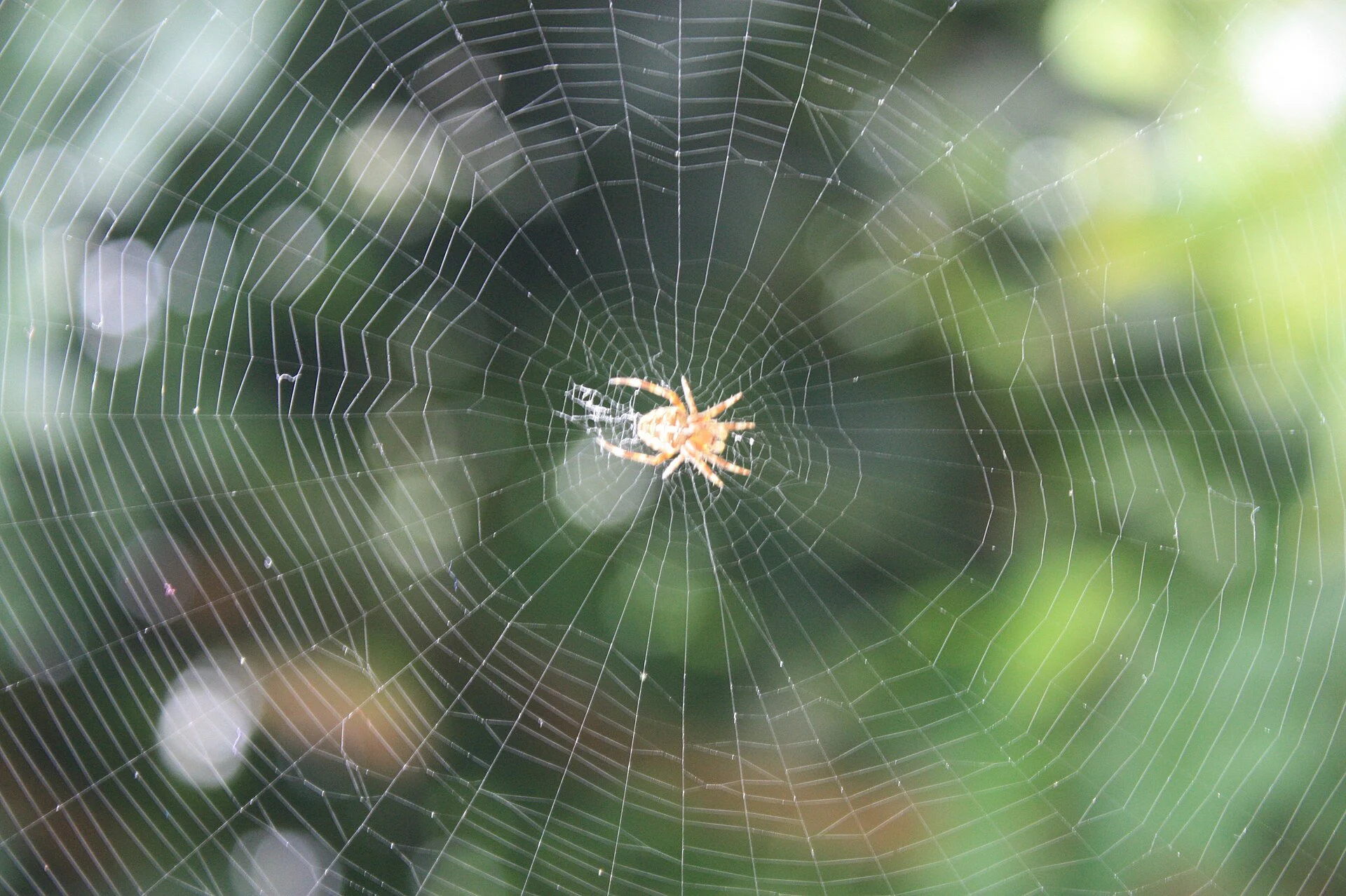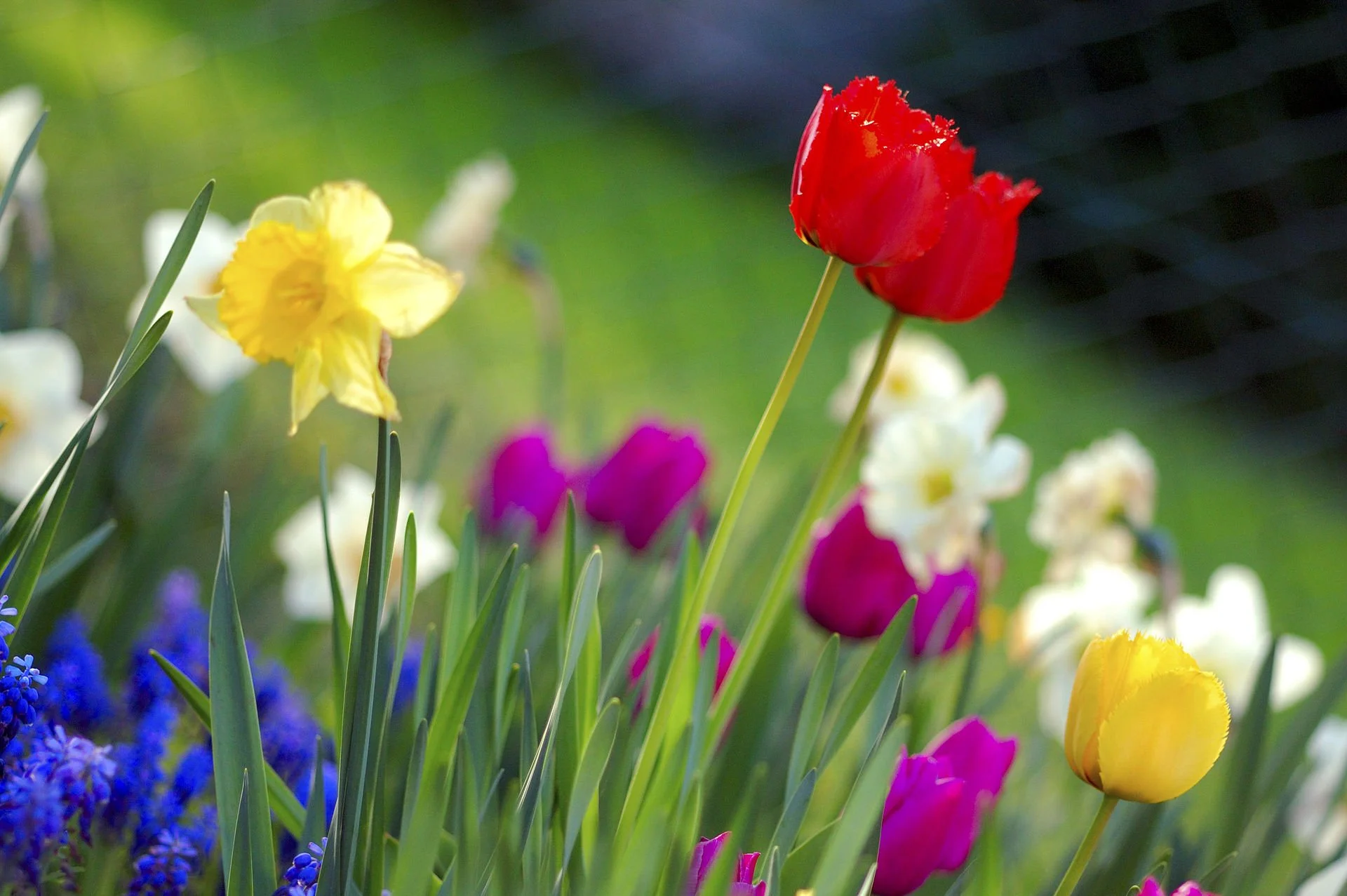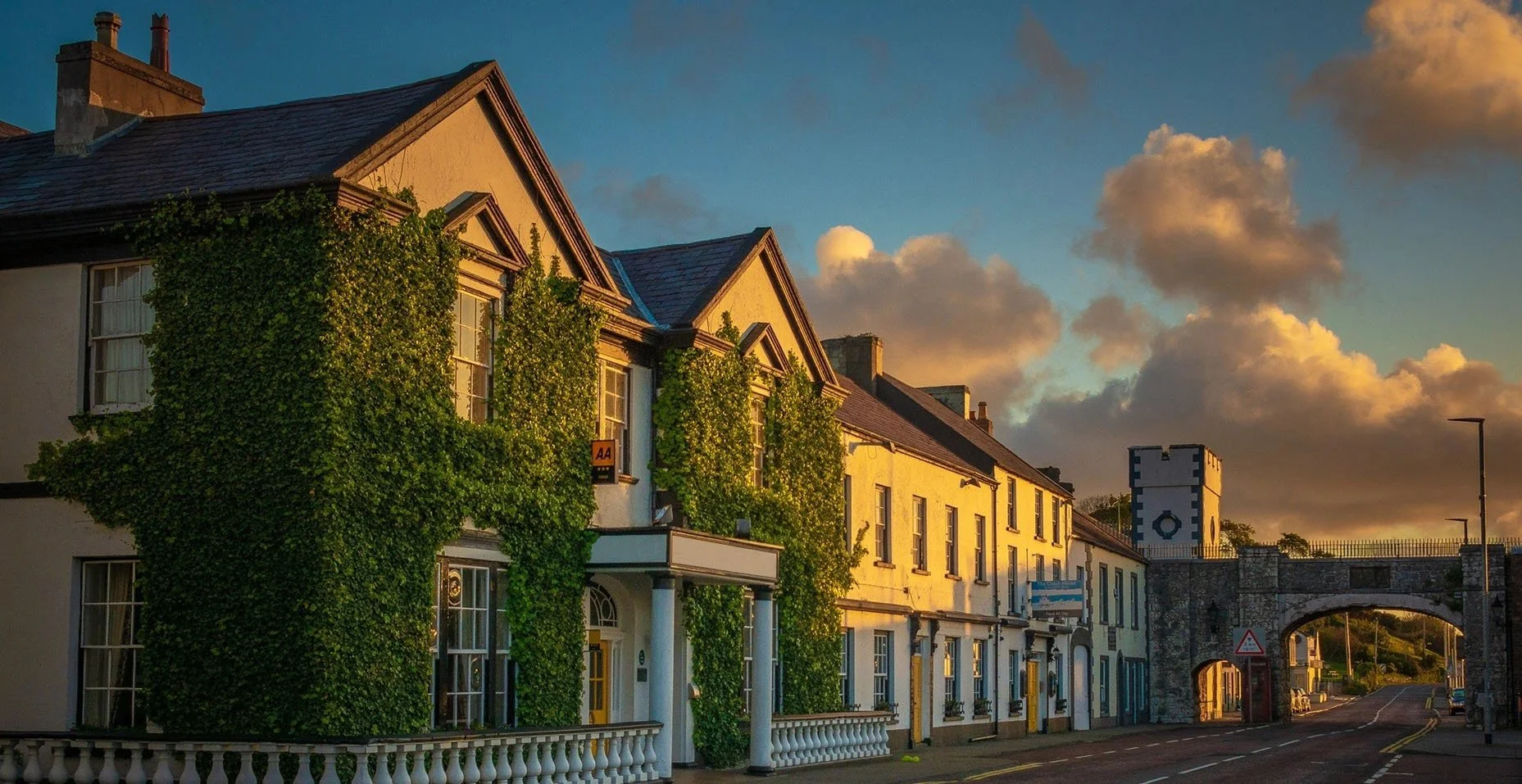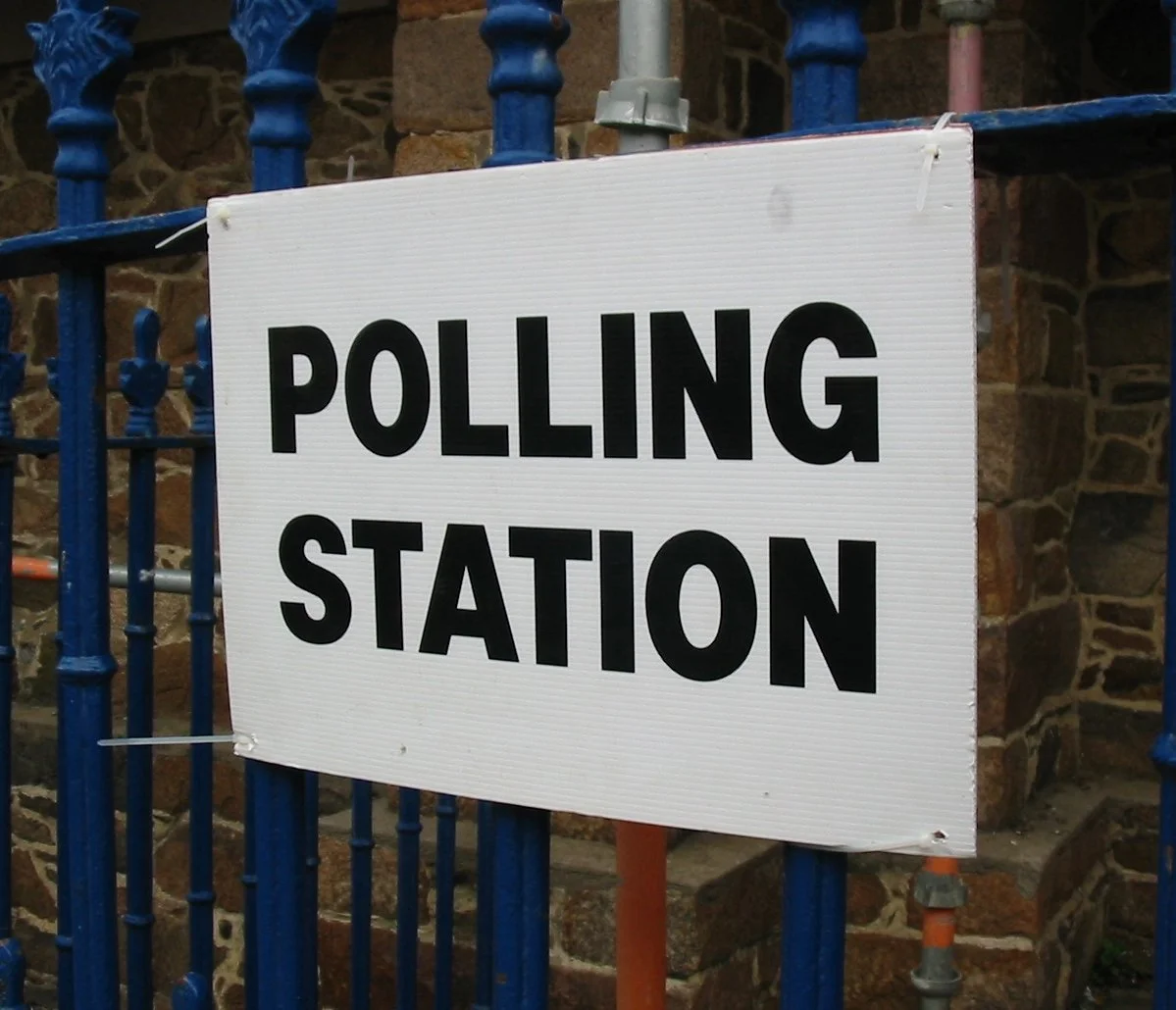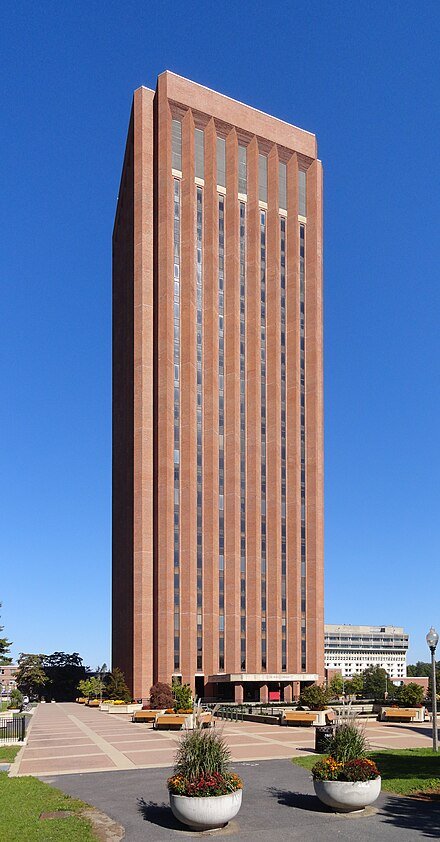Tarek Alexander Hassan: America’s trade deficit Shows the nation’s economic strength
Container ship Ever Fortune in Boston Harbor, in January 2022
— Photo by Arnold Reinhold
From The Conversation (except for image above).
Tarek Alexander Hassan is a professor of economics at Boston University.
He does not work for, consult, own shares in or receive funding from any company or organization that would benefit from this article, and has disclosed no relevant affiliations beyond their academic appointment.
BOSTON
When President Trump imposed sweeping new tariffs on imported goods on April 2, 2025 – upending global trade and sending markets into a tailspin – he presented the move as a response to a crisis. In an executive order released the same day, the White House said the move was necessary to address “the national emergency posed by the large and persistent trade deficit.”
A trade deficit – when a country imports more than it exports – is often viewed as a problem. And yes, the U.S. trade deficit is both large and persistent. Yet, as an economist who has taught international finance at Boston University, the University of Chicago and Harvard, I maintain that far from a national emergency, this persistent deficit is actually a sign of America’s financial and technological dominance.
trade deficit is flip side of investment magnet
A trade deficit sounds bad, but it is neither good nor bad.
It doesn’t mean that the U.S. is losing money. It simply means that foreigners are sending the U.S. more goods than the U.S. is sending them. America is getting more cheap goods, and in return it is giving foreigners financial assets: dollars issued by the Federal Reserve, bonds from the U.S. government and American corporations, and stocks in newly created firms.
That is, a trade deficit can only arise if foreigners invest more in the U.S. than Americans invest abroad. In other words, a country can only have a trade deficit if it also has an equally sized investment surplus. The U.S. is able to sustain a large trade deficit because so many foreigners are eager to invest here.
Why? One major reason is the safety of the U.S. dollar. Around the world, from large corporations to ordinary households, the dollar is used for saving, trading and settling debts. As the world economy grows, so does foreigners’ demand for dollars and dollar-denominated assets, from cash to Treasury bills and corporate bonds.
Because the dollar is so attractive, the Federal Reserve gets to mint extra cash for use abroad, and the U.S. government and American employers and families can borrow money at lower interest rates. Foreigners eagerly buy these U.S. financial assets, which enables Americans to consume and invest more than they ordinarily could.
In return for our financial assets, we buy more German machines, Scotch whiskey, Chinese smartphones, Mexican steel and so on.
Blaming foreigners for the trade deficit, therefore, is like blaming the bank for charging a low interest rate. We have a trade deficit because foreigners willingly charge us low interest rates – and we choose to spend that credit.
U.S. entrepreneurship Lures global capital – and fuels deficit
Another reason for foreigners’ steady demand for U.S. assets is American technological dominance: When aspiring entrepreneurs from around the world start new companies, they often decide to do so in Silicon Valley. Foreigners want to buy stocks and bonds in these new companies, again adding to the U.S. investment surplus.
This strong demand for U.S. assets also explains why Trump’s last trade war in 2018 did little to close the trade deficit: Tariffs, by themselves, do nothing to reduce foreigners’ demand for U.S. dollars, stocks and bonds. If the investment surplus doesn’t change, the trade deficit cannot change. Instead, the U.S. dollar just appreciates, so that imports get cheaper, undoing the effect of the tariff on the size of the trade deficit. This is basic economics: You can’t have an investment surplus and a trade surplus at the same time, which is why it’s silly to call for both.
It’s worth noting that no other country in the world enjoys a similarly sized investment surplus. If a normal country with a normal currency tries to print more money or issues more debt, its currency depreciates until its investment account – and its trade balance – goes back to something close to zero. America’s financial and technological dominance allows it to escape this dynamic.
That doesn’t mean all tariffs are bad or all trade is automatically good. But it does mean that the U.S. trade deficit, poorly named though it is, does not signify failure. It is, instead, the consequence – and the privilege – of outsized American global influence.
The president’s frenzied attacks on the nation’s trade deficit show he’s misreading a sign of American economic strength as a weakness. If the president really wants to eliminate the trade deficit, his best option is to rein in the federal budget deficit, which would naturally reduce capital inflows by raising domestic savings.
Rather than reviving U.S. manufacturing, Trump’s extreme tariffs and erratic foreign policy are likely to instead scare off foreign investors altogether and undercut the dollar’s global role. That would indeed shrink the trade deficit – but only by eroding the very pillars of the country’s economic dominance, at a steep cost to American firms and families.
He wants to be alone
In Orlando Furioso, Angelica meets a hermit.
— By Gustave Dore (1832-1883), French artist
“The peculiarity of the New England hermit has not been his desire to get near to God but his anxiety to get away from man.’’
— Hamilton Wright Mabie (1845-1916), American essayist and editor
High-fiber art
“Experiment II,’’ by Anna Kristina Goransson, in her show “Topia,’’ at Boston Sculptors Gallery, through May 4.
The gallery says she is “a fiber sculptor working mostly with felted wool to create three-dimensional sculptures and installations. The process of taking fluffy wool fibers and creating a strong material that is light-weight and accepts dyes so well has intrigued her since she found this technique in 2004 during her MFA studies at UMass Dartmouth. Having always been a three-dimensional thinker, starting her career as a furniture maker educated at RISD, Kristina is drawn towards working things out sculpturally.’’
Border crossings
“Signage” (Mixed-media painting), by Tom Arsenault, in his show “Travels,’’ at the Corner Gallery, Jaffrey, N.H., through May 21.
The gallery says:
“Deftly merging paint and historical artifact, Arsenault creates ethereal scenes that evoke curiosity and emotion. Blending objects of art from both Eastern and Western traditions, his work seemingly transcends time and place, instead drawing the viewer into a mysterious dreamscape of rich color and surprising depth.’’
Mt. Monadnock, in Jaffrey, one of the world’s most climbed mountains, and the subject of much literature, as painted by Richard Whitney in “Monadnock Orchard’’.
Image from Richard Whitney
A dwelling for us
Adapted from Robert Whitcomb’s “Digital Diary,’’ in GoLocal24.com
Architectural historian and critic William Morgan’s book The Cape Cod Cottage tells the story of an architectural style that started in southeastern Massachusetts as 17th Century colonists’ adapted English houses to our hardy climate. The low-to-the-ground and one-to-one-and-a-half-story dwellings, with center fireplaces and steep roofs with gables, were modest buildings that evoked the practical and aesthetic attributes of the Puritans/Pilgrims.
Mr. Morgan’s history-rich essay and the terrific collection of photos, most by him, that follow make this little book a joy.
Sided with cedar shingles, which in the region’s damp, windy and salty wind turn gray, or with simple clapboard, Cape Cod Cottages from the start evoked a calm domesticity.
Many old Capes have been, to say the least, heavily modified since those early days, with, for example, porches, wings and floors added on, not to mention garages with big ugly doors. Some new alleged “Capes” you might hardly recognize as in that style – too big and pretentious -- McMansions. But the simplicity of those that adhere to the original need or desire for simplicity and economy have continued to lure buyers. Note how many of the post-World War II housing developments, such as the Levittowns, featured small Capes and “modest Capes’’ are still being put up around the country, even in such places as deserts Out West.
I have generally happy memories of my Cape Cod relatives’ cedar-shingled Capes. The newer ones (built since the 19th Century) have two full second floors, but the basic house design was the same. If there was a water view available, lots of owners would stick a porch on that side, often glassing it in.
I well recall the oddly pleasant musty smell (maybe allergy-inciting for some people) of these cozy houses, up from the immediate shoreline in cedar and oak woods , and connect it with my laconic and ironic grandparents and other relatives down there, descendants of Puritans, Pilgrims and Quakers. They never seemed to swear and used phrases such as “don’t-cha-know?” (instead of “you know?’’) and “don’t give me any guff’’ that I haven’t heard for a very long time.
(This book was originally published in 2006 by Princeton Architectural Press in paperback. It’s now being reissued in hardcover by Abbeville and with a new cover design.)
“Spider at His Trade again’
Stephencdickson photo
Anita Martinz photo
An altered look about the hills—
An altered look about the hills—
A Tyrian light the village fills—
A wider sunrise in the morn—
A deeper twilight on the lawn—
A print of a vermillion foot—
A purple finger on the slope—
A flippant fly upon the pane—
A spider at his trade again—
An added strut in Chanticleer—
A flower expected everywhere—
An axe shrill singing in the woods—
Fern odors on untravelled roads—
All this and more I cannot tell—
A furtive look you know as well—
And Nicodemus' Mystery
Receives its annual reply!
—Emily Dickinson (1830-1886), the famed poet who lived in Amherst, Mass.
Llewellyn King: God save us from our cowardly Congress
The former Londonderry Arms, now called the Harbourview Hotel.
WEST WARWICK, R.I.
October 1989 found me in a small hotel, the Londonderry Arms, on the Antrim Coast of Northern Ireland. It was during “The Troubles” and evidence of the sectarian strife was everywhere, even along that beautiful shoreline, complete as it is with the Giant’s Causeway, one of Northern Ireland’s big tourist attractions.
My wife, Linda Gasparello, and I were reminded of the bitter divisions between Protestants and Catholics when we were stopped by British soldiers at a roadblock. They were polite and checked our papers. While they were doing that, Linda said, “Aren’t those soldiers vulnerable, standing like that in the open road?”
“Take a look over there,” I replied.
Just as I knew there would be, there was a soldier in a ditch with a machine gun trained on us and offering cover to the troops.
It was a reminder of just how bad things were in Northern Ireland at the time with frequent murders, kneecapping, and a lack of any communication between Protestants and Catholics. One people divided by their religious and historical burden.
The Londonderry Arms was a hotel of historic importance, having once been owned briefly by Winston Churchill and which was operated from 1948 until last year by the legendary O’Neill family.
We had been warmly welcomed and made at home by Frankie O’Neill. After dinner at the hotel, he came to me and said, “I am afraid I won’t be able to be with you after today because I am taking my sister to Washington to see the Congress at work.”
“Why?” I asked.
One could imagine traveling to Washington to see the museums, the White House and the Capitol. But Congress in session, that querulous place with its confusing systems and norms?
Then he explained that the Northern Ireland Parliament, called Stormont, after Stormont Castle where it meets, is based on the British House of Commons where party discipline is rigid. Under a parliamentary system, the government of the day would fall if there were no party discipline. If you are Labor, you vote Labor; if Conservative, you vote Conservative. Only very occasionally is there a free vote on a moral issue, like the death penalty.
That meant, O’Neill told me, that in Northern Ireland, Catholics and Protestants were on opposite sides of the aisle and the government was always at a standstill.
He thought that the American legislative system, with its ability to incorporate minority views, and for minorities to introduce and pass legislation of interest only to a fragment of the population, was a beacon for Ireland.
I don’t think that O’Neill would take his sister to Washington today to see the Congress as it is now: inglorious, pusillanimous, fawning men and women more concerned with their own job protection than discharging the high duty of the House and the Senate. Worse, its magnificent independence has been traded for obsequious party loyalty.
Of course, the lickspittle members of Congress at present are the wretched, obsequious, groveling Republicans who have enabled President Trump to trample the Constitution and usurp the powers of Congress.
But one has to say the Democrats are hardly admirable, not exactly an impressive body of leaders. In their way, they are humbled by their own diminished concept of the role of the loyal opposition.
The Republicans may be the more guilty invertebrates, but the equivalence of the Democrats is also noteworthy in this sad abrogation of responsibility that has taken hold of the political class in Congress. Look no further than Senate Minority Leader Chuck Schumer’s failure of courage in throwing in with the Republicans to keep the government open. It was political will withering in plain sight.
As someone who was covering Congress at the time of O’Neill’s declaration about the superiority of Congress as a democratic legislating arrangement, I have seen that great body subsume the national interest to personal job security and fear of criticism from on high, the White House.
The great thing at that time was the individualism of members of Congress, who had a keen eye to their constituents and what they felt was the national interest.
Sadly, that grand time of free-for-all legislating came to an end when Newt Gingrich took up the House speaker’s gavel in 1994 and introduced a concept of party discipline more appropriate to Westminster than to Capitol Hill. Shame.
On Twitter: @llewellynking2
Llewellyn King is executive producer and host of White House Chronicle, on PBS, and an international energy-sector consultant and speaker. He’s based in Rhode Island.
Boston’s housing-creation Drought worsens
Excerpted and edited from a Boston Guardian article.
After booming during Mayor Marty Walsh’s years, construction of new apartments, condos and homes in Boston has plunged.
The drop-off began in mid-2022 as the Federal Reserve hiked interest rates to battle inflation and as Boston Mayor Michelle Wu shifted city housing policy away from her predecessor’s pro-growth approach.
During her first months in office, Wu unveiled an ultimately unsuccessful plan to bring back a form of rent control, while also vowing to hike affordable housing and energy efficiency for new housing developments.
And while Marty Walsh had focused on boosting the volume of new housing produced by encouraging private-sector development, Wu refocused city efforts on building more public housing.
Now the decline appears to be gaining speed, with the city’s Building Department issuing just building permits for just 72 new housing units in March, according to a review of city records….
This caps a dismal, seven-month run in which housing starts in Boston have fallen to their lowest levels since at least 2018.
Lineage in history
“material research,’’ by Alia Farid, at her show at Johnson-Kulukundis Gallery, in Cambridge Mass.
The gallery explains:
The show displays “large, greenish-blue resin panels embedded with family photographs, spiritual charts, and historical documents. The work explores themes of lineage, memory and geopolitical histories, reflecting personal and collective identities shaped by migration, cultural traditions and archival storytelling. The image below reflects small, irregularly shaped blue ceramic fragments resting on a textured greenish surface, casting soft shadows.’'
Chris Powell: Elections are insecure without proof of citizenship; then why the extra grades?
MANCHESTER, Conn.
Having fallen in love with executive orders even more than his predecessor did, President Trump is coming down with a bad case of megalomania. He has little authority to command the states to follow any particular election procedures, as he presumed to do with another executive order the other day. Congress can do that but not the president on his own.
Connecticut Secretary of the State Stephanie Thomas properly called the order “another unlawful and unconstitutional overreach into our electoral processes."
But as a matter of policy in regard to the order's most important component, Trump is right and Thomas is wrong.
Trump wants people to be required to provide proof of citizenship when registering to vote. While the law requires citizenship for voting in federal and state elections, Connecticut and most other states don't require proof of it -- a birth certificate, passport, or naturalization document. Registrants are required only to affirm their citizenship under penalty of perjury.
Of course few officials check.
Thomas echoed the weak objections to requiring proof of citizenship for voter registration: Many people don't have or have misplaced their birth certificates. Many don't have passports. Many have changed their names but have not updated their identification documents.
While these are fair concerns, conscientious people can address them easily enough, even as government already often requires people to produce identification for purposes far less important than voting.
These days in Connecticut even grizzly old graybeards are being ‘‘carded" in the supermarket when buying beer. In Connecticut you can't legally drive a car without a driver’s license and the car must be registered with the state and covered by insurance. Those things require producing identification. So does boarding an airplane. Such requirements are inconveniences, especially for the poor people Democrats prattle about, but there are good reasons for them and Secretary Thomas hasn't proposed repealing them.
Being a good citizen requires some effort. It is not too much to ask people to maintain proof of citizenship in the face of the devaluation of citizenship that was undertaken by previous national administrations and continues to be advocated by most Democratic officials in Connecticut, whose belief in illegal immigration has made the state a “sanctuary" obstructing enforcement of immigration law.
Many Democrats in Connecticut and elsewhere advocate letting non-citizens vote, at least in municipal elections. Indeed, in 2022 New York City, a Democratic bastion and ‘‘sanctuary city," enacted an ordinance to let non-citizens vote in city elections, contradicting New York's state constitution. Last month the state's Supreme Court nullified the ordinance.
Secretary Thomas says Connecticut already has “strong and secure elections," but that claim is undermined by recent election fraud involving prominent Democrats in Bridgeport and Stamford. Many municipalities in Connecticut seem unable to tabulate elections fully in less than two or three days, leaving plenty of room for fiddling with close results when observers have gone to sleep.
Republicans in Congress support legislation to require proof of citizenship for voting, but it will be blocked by Democrats in the Senate, just as similar legislation would be blocked in Connecticut by the big Democratic majority in the General Assembly.
As long as Connecticut refuses to confirm the eligibility of voters, its elections won't really be secure.
WHY THE EXTRA GRADES?: A state legislator has noticed the disaster of social promotion in Connecticut's public schools. State Rep. Tami Zawistowski (R-East Granby) has introduced a bill to require high-school graduates to show they can read at an eighth-grade level.
Of course there are 12 grades in public education, but even the low bar proposed by Zawistowski may terrify educators. Her bill might have a better chance if it linked graduation to a fourth-grade reading level.
Zawistowski's honesty about education raises a good question: Whether the standard is to be eighth grade or fourth grade, why is Connecticut bothering with all those extra grades?
Chris Powell has written about Connecticut government and politics for many years (CPowell@cox.net).
‘Shifting roles of technology’
“Thin Ice,’’ by Joseph Smolinski, at Real Art Ways, Hartford, Conn., through April 23.
His Web site says that Mr. Smolinski is a multidisciplinary artist and educator who lives and works in New Haven. “His practice questions the shifting roles of technology within communication networks, energy and oil companies, and the industrial agricultural infrastructure, which indelibly shape the so-called natural environment.’’
Jennifer Tucker: Trump opens new front in culture wars
The Smithsonian Building (aka “The Castle”), in Washington.
Jennifer Tucker is a professor of history at Wesleyan University.
She does not work for, consult, own shares in or receive funding from any company or organization that would benefit from this article, and has disclosed no relevant affiliations beyond their academic appointment.
This article, except for the picture above, is from The Conversation.
MIDDLETOWN, Conn.
I teach history in Connecticut, but I grew up in Oklahoma and Kansas, where my interest in the subject was sparked by visits to local museums.
I fondly remember trips to the Fellow-Reeves Museum, in Wichita, Kansas, and the National Cowboy & Western Heritage Museum in Oklahoma City. A 1908 photograph of my great-grandparents picking cotton has been used as a poster by the Oklahoma Historical Society.
This love of learning history continued into my years as a graduate student of history, when I would spend hours at the Smithsonian Institution’s National Air and Space Museum learning about the history of human flight and ballooning. As a professor, I’ve integrated the institution’s exhibits into my history courses.
The Trump administration, however, is not happy with the way the Smithsonian Institution and other U.S. museums are portraying history.
On March 27, 2025, the president issued an executive order, “Restoring Truth and Sanity to American History,” which asserted, “Over the past decade, Americans have witnessed a concerted and widespread effort to rewrite our Nation’s history, replacing objective facts with a distorted narrative driven by ideology rather than truth. Under this historical revision, our Nation’s unparalleled legacy of advancing liberty, individual rights, and human happiness is reconstructed as inherently racist, sexist, oppressive, or otherwise irredeemably flawed.”
Trump singled out a few museums, including the Smithsonian, dedicating a whole section of the order on “saving” the institution from “divisive, race-centered ideology.”
Of course, history is contested. There will always be a variety of views about what should be included and excluded from America’s story. For example, in my own research, I found that Prohibition-era school boards in the 1920s argued over whether it was appropriate for history textbooks to include pictures of soldiers drinking to illustrate the 1791 Whiskey Rebellion.
But most recent debates center on how much attention should be given to the history of the nation’s accomplishments over its darker chapters. The Smithsonian, as a national institution that receives most of its funds from the federal government, has sometimes found itself in the crosshairs.
America’s historical repository
The Smithsonian Institution was founded in 1846 thanks to its namesake, British chemist James Smithson.
Smithson willed his estate to his nephew and stated that if his nephew died without an heir, the money – roughly US$15 million in today’s dollars – would be donated to the U.S. to found “an establishment for the increase and diffusion of knowledge.”
The idea of a national institution dedicated to history, science and learning was contentious from the start.
In her book The Stranger and the Statesman, historian Nina Burleigh shows how Smithson’s bequest was nearly lost due to battles between competing interests.
Southern plantation owners and western frontiersmen, including President Andrew Jackson, saw the establishment of a national museum as an unnecessary assertion of federal power. They also challenged the very idea of accepting a gift from a non-American and thought that it was beneath the dignity of the government to confer immortality on someone simply because of a large donation.
In the end, a group led by congressman and former president John Quincy Adams ensured Smithson’s vision was realized. Adams felt that the country was failing to live up to its early promise. He thought a national museum was an important way to burnish the ideals of the young republic and educate the public.
Today the Smithsonian runs 14 education and research centers, the National Zoo and 21 museums, including the National Portrait Gallery and the National Museum of African American History and Culture, which was created with bipartisan support during President George W. Bush’s administration.
In the introduction to his book Smithsonian’s History of America in 101 Objects, cultural anthropologist Richard Kurin talks about how the institution has also supported hundreds of small and large institutions outside of the nation’s capital.
In 2024, the Smithsonian sent over 2 million artifacts on loan to museums in 52 U.S. states and territories and 33 foreign countries. It also partners with over 200 affiliate museums. YouGov has periodically tracked Americans’ approval of the Smithsonian, which has held steady at roughly 68% approval and 2% disapproval since 2020.
Smithsonian in the crosshairs
Precursors to the Trump administration’s efforts to reshape the Smithsonian took place in the 1990s.
In 1991, the Smithsonian American Art Museum, which was then known as the National Museum of American Art, created an exhibition titled “The West as America, Reinterpreting Images of the Frontier, 1820-1920.” Conservatives complained that the museum portrayed western expansion as a tale of conquest and destruction, rather than one of progress and nation-building. The Wall Street Journal editorialized that the exhibit represented “an entirely hostile ideological assault on the nation’s founding and history.”
The exhibition proved popular: Attendance to the National Museum of American Art was 60% higher than it had been during the same period the year prior. But the debate raised questions about whether public museums were able to express ideas that are critical of the U.S. without risk of censorship.
In 1994, controversy again erupted, this time at the National Air and Space Museum over a forthcoming exhibition centered on the Enola Gay, the plane that dropped the first atomic bomb on Hiroshima 50 years prior.
Should the exhibition explore the loss of Japanese lives? Or emphasize the U.S. war victory?
Veterans groups insisted that the atomic bomb ended the war and saved 1 million American lives, and demanded the removal of photographs of the destruction and a melted Japanese school lunch box from the exhibit.
Meanwhile, other activists protested the exhibition by arguing that a symbol of human destruction shouldn’t be commemorated at an institution that’s supposed to celebrate human achievement.
Republicans won the House in 1994 and threatened cuts to the Smithsonian’s budget over the Enola Gay exhibition, compelling curators to walk a tightrope. In the end, the fuselage of the Enola Gay was displayed in the Smithsonian’s National Air and Space Museum. But the exhibit would not tell the full story of the plane’s role in the war from a myriad of perspectives.
Trump enters the fray
In 2019, The New York Times launched the 1619 project, which aimed to reframe the country’s history by placing slavery and its consequences at its very center. The first Trump administration quickly responded by forming its 1776 commission. In January 2021, it produced a report critiquing the 1619 project, claiming that an emphasis on the country’s history of racism and slavery was counterproductive to promoting “patriotic education.”
That same year, Trump pledged to build “a vast outdoor park that will feature the statues of the greatest Americans to ever live,” with 250 statues to mark the 250th anniversary of the Declaration of Independence.
President Joe Biden rescinded the order in 2021. Trump reissued it after retaking the White House, and pointed to figures he’d like to see included, such as Christopher Columbus, George Washington, Betsy Ross, Sitting Bull, Bob Hope, Thurgood Marshall and Whitney Houston.
I don’t think there is anything wrong with honoring Americans, though I think a focus on celebrities and major figures clouds the fascinating histories of ordinary Americans. I also find it troubling that there seems to be such a concerted effort to so forcefully shape the teaching and understanding of history via threats and bullying. Yale historian Jason Stanley has written about how aspiring authoritarian governments seek to control historical narratives and discourage an exploration of the complexities of the past.
Historical scholarship requires an openness to debate and a willingness to embrace new findings and perspectives. It also involves the humility to accept that no one – least of all the government – has a monopoly on the truth.
In his executive order, Trump noted that “Museums in our Nation’s capital should be places where individuals go to learn.” I share that view. Doing so, however, means not dismantling history, but instead complicating the story – in all its messy glory.
The Conversation U.S. receives funding from the Smithsonian Institution.
Safer than Viagra
“Love Potion Number 9”(Posca on paper), by Mel Bernstine, at Bernay Fine Art, Great Barrington, Mass., through April 27.
How Main Street, Great Barrington, will look very soon.
The huge Economic Impact of New England higher Education
The rather ominous-looking W.E.B. Du Bois Library, at the University of Massachusetts at Amherst, built in the late 1960’s, is the tallest academic research library in the world, at 26 stories.
BOSTON
Edited from a report by The New England Council (NEC) and the New England Board of Higher Education (NEBHE)
These two organizations have once again partnered to release fact sheets highlighting the economic impact of the higher-education sector in the region.
These highlight the economic impact that colleges and universities have in each state, as well as aggregate data for the entire region.
Data points covered include total economic impact, federal tax revenue generated, jobs in the higher education sector, jobs created in the state, total number of institutions, total students, and students awarded a Pell Grant.
Some highlights include:
The higher education sector in New England had a total economic impact of $26.5 billion in 2024.
New England colleges and universities employed nearly 276,972 people, and served over 1.1 million students in 2024.
In New England, higher education was responsible for creating over 562,640 jobs in 2024.
Colleges and universities in New England generated $1.1 billion in federal tax revenue in 2024.
The data was compiled by NEBHE and is available to all New England Council members to use in their own advocacy efforts. You can download the fact sheets here:
For more information, please contact NEC Director of Federal Affairs Mariah Healy or NEBHE Associate Director of Policy and Research Robert Merth.
Colleen Cavanaugh: Precious offspring in my Yard
Male black swallowtail butterfly
The soft cooing of a mourning dove greets me. My eyes open as light slips between the slats of the blinds. The room brightens. The cats playfully pounce on my feet as I try to burrow deeper under the blanket. If I don’t feed them soon, their attacks will grow in ferocity, so I bound out of bed.
Throwing on my favorite jeans and a blue and white flannel shirt, I walk to the kitchen and feed Ollie and Lilly, finally appeasing their relentless mewing. As they eat, I pour a cup of steaming coffee into my to-go mug and I happily march outside to my garden.
“See you later, cats,” I call.
My coffee is hot and a little bitter, but that doesn’t matter. The sky is brightening. With a relaxed sigh, I bend over and peek at emerging seedlings. As I shamelessly congratulate myself on each garden victory, I am gleefully chattering aloud. Thankfully, only the birds can hear me. This is my spring ritual.
Later in the day, I carefully guide a young rosemary seedling into a fiery red pot, introduce a sage plant to a mustard yellow pot with green horizontal stripes, and tuck a delicate-leafed thyme into a brightly patterned blue and white checkered pot. I then sprinkle dill seeds into the soil of an old jade green pot that I found buried in a corner in my shed.
I happily arrange the haphazard pot display just outside the vegetable garden along the wooden fence. The juxtaposed colored pattern, a virtual 3-D representation of a Mondrian painting, seems to bounce and shout in the sun, beckoning the warm rays to join in a dance of photosynthesis. I am proud of my herb garden. The rosemary, sage and thyme come to life.
The dill flourishes — ethereal with its green fronds creating an intricate blanket of lace.
Over the years I have obsessively collected more pots than I needed through yard sales, gifts from friends and serendipitous purchases. Their bright colors, assurances of fertility promotion and promises of culinary conquests still seduce me.
This morning, during my habitual inspection, I spot several small, wiggling insects crawling among the dill. The closer I get and the more intensely I peer, the more green worms I see crawling. Concerned that these invaders would ravage my dill, I pluck a few out and squish them.
A day or two later at a community farm where I volunteer, I mention my new find to my friend Sheila. I often seek her help with my gardening questions.
“Sheila, I found dark green worms all over my dill this morning. I’m not sure what they are but they’re voraciously eating my dill.”
Sheila quietly shifts her focus to me from the tomatoes she is planting, raising her bushy, caterpillar-like gray eyebrows in consternation.
“Those are probably larvae of the black swallowtail butterfly,” she says matter of factly.
I am mortified but also relieved that I had not disclosed the details of my heartless killing spree to Sheila. I know this species of butterfly, whose males have exquisite black wings with small yellow and blue markings. My gardens have always been blessed with the flurry of monarchs and black swallowtails filling the sky. It’s a sight I rejoice in, and now I am saddened by my carelessness .
Returning home, I dutifully rush to the dill pot and carefully examine the remaining caterpillars. It’s as if a veil has been lifted and only now can I truly see the intricate markings of these enchanting insects. They are adorned with black, green, yellow and white horizontal stripes.
Fortunately, many are still crawling on, and chomping at, the dill. Over the next few days, I monitor them closely and am amazed at how quickly they grow but at the same time, a little saddened by how rapidly my dill is diminishing. My luscious dill is now a pot of spindly, naked stalks. Still, I feel protective of the caterpillars. I count them daily and am heartbroken when I realize their numbers are dwindling.
I diligently research the black swallowtail (Papilio polyxenes) and discover it also eats parsley. Apparently the larvae and caterpillars consume the greens of the Apiaceae family, which include carrots, dill and parsley.
And so, as the dill disappears, I gently pick up each caterpillar and transport it reverentially across the garden to my bed of parsley, placing each of them on a different parsley leaf or stem. I perform this parade of salvation many times, coaxing the caterpillars in a quiet, soothing voice, confident that I could save their population.
“Come with me, little Baxter.”
“Wait until you see what I have for you, sweet Penny.”
“Oh yes, my little Katie. You will be so happy.”
I named each of them, hoping that my silly anthropomorphic greetings will encourage their survival. I am more than eager to share my parsley with them, especially if this sacrifice could save my new friends.
However, over the next several days, the parsley remains untouched. The caterpillars continue to disappear and soon there are none.
Over the next month, the garden flourishes. Neighbors stop to comment on the beautiful allium and iris in the spring. The scent of lavender soon fills the air. Roses and clematis climb rickety trellises. I have planted many pollinators and native plants so that the bee and butterfly populations grow exponentially. rickety trellises.
In August, the dahlias start to bloom, and so there is an additional exuberance of color emerging along the driveway.
One day in early September, on a return trip from the grocery store, I notice a small black swallowtail on the driveway. I hurriedly place my grocery bags down and rush over to examine the tiny insect. It is barely moving its wings. I know it is injured. I gently pick it up and place it amongst a bed of zinnias. I can only hope that it will survive.
Later in the day, when I return to the yard to search for the butterfly. I find it motionless. Its beautiful wings lie still in the garden. I gingerly cradle its lifeless form and carry it to my study. Every day I open the small wooden jewelry box I have placed it in.
I wondered if the butterfly remembered me and had returned home to die.
Maybe it was one of the caterpillars I had transported across the yard with my silly, affectionate whispers. Maybe it was Penny or Katie. Now it is an integral part of the story of my home. Over time, its color fades, its fragile wings fall apart and one day I cannot find it.
The following spring, I plant butterfly weed, Joe Pye weed, ironweed and many other perennials I know butterflies are attracted to. In the summer, when I sit quietly in my Adirondack chair in the middle of my garden, I can see beautiful monarchs and swallowtails, hovering over flowers, drinking nectar and filling my home with their beauty. Each year the garden grows larger, colors are more vibrant and I see the gently beating wings of the precious offspring of the Baxters, Katies and Pennys from years ago.
Colleen Cavanaugh, of Bristol, R.I., is a obstetrician and gynecologist in private practice, a writer and a former ballet dancer. She recently completed her first novel, Astral Ballerinas.
Colleen Cavanaugh © 2025
‘Porous boundaries’
From Linda Leslie Brown’s show “Circulations,’’ at Kingston Gallery, Boston, through April 27.
The gallery says:
“{Boston-based} Linda Leslie Brown’s sculptures explore the transformative exchanges between nature, objects, and the viewer’s creative perception. Her works are rich with allusions to the body, while simultaneously evoking a new, transgenic nature—one where corporeal and mechanical entities merge and recombine. The sculptures suggest a world that is both fluid and uncertain, where the boundaries between organic and synthetic are porous and ever-shifting.’’
Finally, Mass. South Coast passenger trains again!
An MBTA train heads toward Boston from its New Bedford station.
Adapted from Robert Whitcomb’s “Digital Diary,’’ in GoLocal24.com
The MBTA’s South Coast Rail is finally providing service between Boston, Fall River and New Bedford. As people get used to it, it will take more and more cars off the roads over the next few years and will help trigger economic development and housing construction in the two cities, which could sorely use it.
The South Coast had passenger-train service until the ‘50s, when America’s excessive dependence on cars, compounded by the start of the Interstate Highway System and a generalized government neglect of public transportation, led to its demise. Now it’s catchup.
But the $1 billion South Coast project has taken decades to get done, largely because of short-sighted nimbyism.
Consider that the construction took much longer and cost a lot more because local foes fought the most direct route, which would have involved carefully cutting through a swamp via an old rail-line route that was used until the ‘50s. Opponents cited rare turtles and salamanders. But it stretches credulity that a rail line (much narrower than a highway) would have posed much of a problem to these creatures if a proposed trestle bridge and other adjustments had been made to the swamp route to protect wildlife.
Of course, multilane roads do far, far more damage to wildlife, via vehicles running them over, air pollution, runoff from oil, gasoline and other vehicle liquids, and global warming, than trains do. And having to go in a zigzag route added 20 minutes to the South Shore to Boston trip, making it less competitive with cars.
It’s no secret that it has become outrageously easy in litigious America for small groups to block big projects for years, although they are manifestly in the general public interest. You can never please everyone. Government needs boosted eminent-domain and other powers to move faster.
xxx
Speaking of traffic, a study has confirmed what I have long suspected: Our ever-increasing traffic density can be blamed in part on the popularity in America of huge, gas-guzzling SUVs, in addition to a growing population, lousy public transit, and sprawl development.
Researchers looking at traffic in Minneapolis-St. Paul found that SUV popularity reduced the capacity of highway lanes by 9.5 percent between 1995 and 2019.
Further, while SUV drivers perceive themselves to be safer than in less, er, formidable vehicles, they are big killers of the pedestrians and people in small cars they crash into. One might also note SUV’s high profiles combined with blinding LED headlights serve to blind drivers coming from the opposite direction.
Whatever! Americans love big cars and go deep into debt to drive them. For that matter, they like big in general when they can afford it – including huge houses.
How to win and lose
“Mrs. (Isabella Stewart) Gardner in White’’ (1922), by John Singer Sargent.
“Win as though you were used to it, and lose as if you like it.’’
— Isabella Stewart Gardner (1840-1924), American art collector, philanthropist, and patroness of the arts. She founded the Isabella Stewart Gardner Museum, in Boston, which has a spectacular collection, though slightly less so after the world’s greatest art theft, in 1990. Its perpetrators have not been caught.
The art of data
“ComplexCity” (detail), by John Simon Jr., in the group show “Data Infused,’’ at the University of Connecticut Contemporary Art Galleries, Storrs, Conn.
— Courtesy of the artist
The curator explains:
“Data Infused’’ showcases seven artists who use data as both a design material and a medium for creative expression. Moving beyond data visualization, these artists explore data's potential in artistic storytelling, transforming raw information into tangible art forms. By doing so, they reimagine data's role, emphasizing its cultural, social and artistic significance.
“The participating artists bridge traditional art practices such as drawing, printmaking, painting, sculpture, performance, and sound, with innovative digital techniques. These include custom code, algorithms, Artificial Intelligence (AI), CNC and laser etching, digital photography, and pen plotting. Their work is displayed through a wide array of media; including digital monitors, NFTs, murals, photography, sculptures, public art, and painted or printed surfaces. Data Infused will include a sampling of some of their artistic processes, offering audiences a deeper understanding of how data is transformed into unique creative outputs.’’
